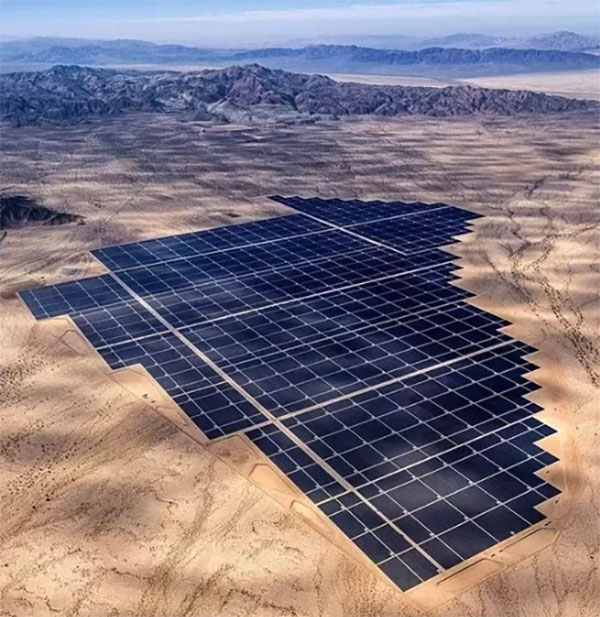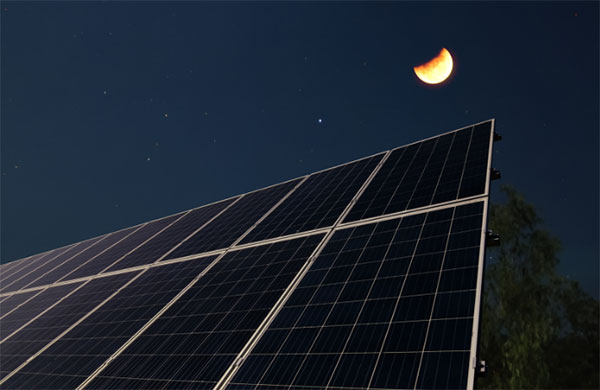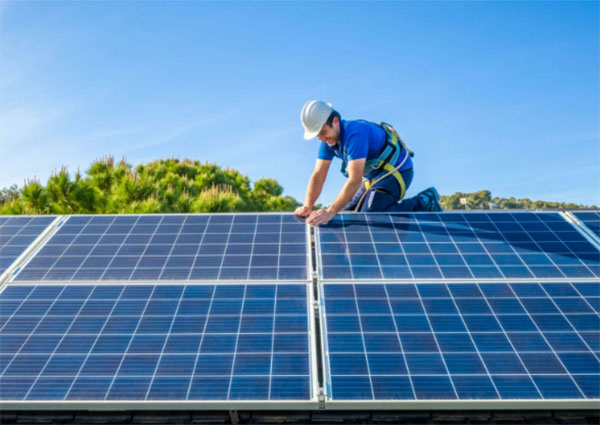Description
Yes, solar panels gradually become less efficient over time, typically degrading at a rate of about 0.5% to 1% annually.
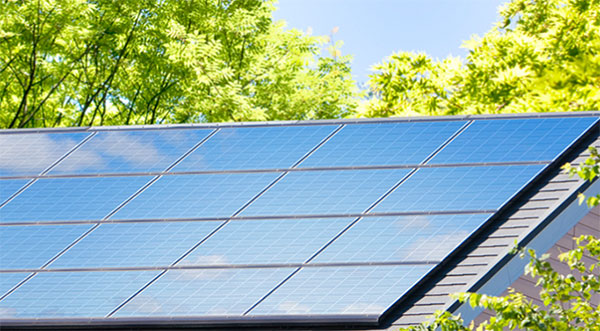
Understanding Solar Panel Degradation
Solar panel degradation significantly affects their long-term performance. This degradation, primarily driven by environmental factors and material aging, leads to a gradual decrease in energy output over time.
Factors Contributing to Efficiency Loss
Solar panels lose efficiency for various reasons.
Exposure to sunlight, ironically necessary for their operation, slowly damages the photovoltaic cells.
UV radiation and
thermal cycling cause micro-cracks in the silicon cells, compromising their integrity and efficiency. Additionally,
humidity can penetrate panel seals, causing corrosion and electrical issues.
Physical damage from weather events like hail or strong winds also contributes to efficiency loss. The
type of solar panel—whether monocrystalline, polycrystalline, or thin-film—also dictates its sensitivity to these factors. Monocrystalline panels, known for their higher efficiency, tend to be more resilient than their polycrystalline counterparts.
Typical Degradation Rates of Solar Panels
Solar panels typically degrade at an annual rate of 0.5% to 3%, depending on their quality and environmental conditions. High-quality monocrystalline panels often showcase a slower degradation rate, closer to the 0.5% mark. This means a panel advertised at a
20% efficiency rate will, after 20 years, likely operate at around
18% efficiency. The degradation is more pronounced in harsher climates, with extremes of temperature and increased UV exposure.
In terms of
cost implications, a slower degradation rate preserves the value of the investment longer. For instance, a solar panel system costing
$10,000 with minimal degradation retains more of its initial value and performance over a 25-year period compared to one that degrades faster. This aspect is crucial when considering the
longevity and overall budget for a solar installation project.
The
size and specifications of the panels play a minor role in degradation. Larger panels may have more structural integrity, but the efficiency loss primarily relates to the cell material and environmental exposure.
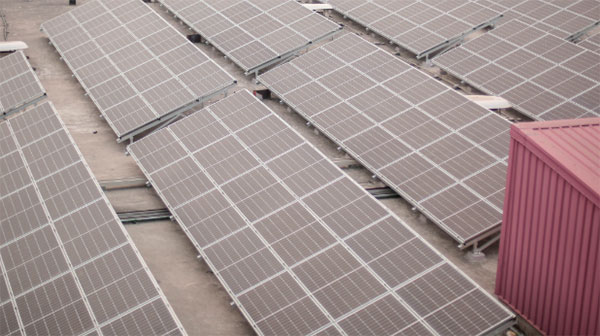
Measuring and Monitoring Efficiency Over Time
Regularly measuring and monitoring the efficiency of solar panels is crucial for maintaining their optimal performance. This process involves evaluating the panels' ability to convert sunlight into electricity and identifying any decline in performance over time.
Techniques for Assessing Solar Panel Performance
Various methods exist for assessing the performance of solar panels. The most common technique is
performance ratio (PR) measurement, which compares the actual energy output with the expected output under ideal conditions. Another essential tool is
I-V curve tracing, providing detailed insights into the performance characteristics of solar panels under varying conditions of irradiance and temperature. Additionally,
thermal imaging can detect hot spots caused by cell damage or shading, which adversely affect panel efficiency.
Data loggers play a crucial role in this process, continuously recording the output of the solar panels. These devices help to track performance over time, offering valuable data for analyzing trends and identifying any gradual reduction in efficiency.
Remote monitoring systems also allow for real-time tracking of solar panel performance, enabling prompt identification and resolution of any issues.
The Role of Maintenance in Preserving Efficiency
Regular maintenance significantly impacts the efficiency and lifespan of solar panels.
Cleaning the panels removes dust, dirt, and other residues that can block sunlight, directly affecting the power output. For instance, panels covered in dust can experience a reduction in efficiency of up to
20%.
Inspecting and tightening connections ensure optimal electrical performance and reduce the risk of power loss.
Checking the inverter is also crucial, as it converts the solar energy into usable electricity. A malfunctioning inverter can lead to substantial efficiency losses.
Properly maintained solar panels not only perform better but also have a longer lifespan. For example, a well-maintained solar panel system can retain more than
85% of its initial efficiency after 20 years, compared to systems with minimal maintenance that might drop below
80% efficiency in the same period.
Impact of Environmental Conditions
Environmental conditions significantly influence the performance and durability of solar panels. Understanding how different weather and climate factors affect solar panels is essential for optimizing their efficiency and lifespan.
Effects of Weather and Climate on Solar Panels
Solar panels face various challenges depending on the weather and climatic conditions they are exposed to:
- Extreme Temperatures: Both high and low temperatures can affect solar panel efficiency. While solar panels require sunlight to generate power, extremely high temperatures can reduce their efficiency. For instance, the efficiency of a typical solar panel may decrease by about 0.25% to 0.5% for every degree Celsius above 25°C. Conversely, cold temperatures can improve performance, but the lack of sunlight in winter months often negates this benefit.
- Snow and Ice: Heavy snow can block sunlight, significantly reducing power generation. The weight of the snow can also physically damage the panels.
- Wind and Storms: High winds can cause physical damage, including loosening mounting systems or causing debris to strike the panels. Storms can bring a combination of damaging wind, hail, and heavy rain.
- Hail: Solar panels are generally designed to withstand hail of a certain size and speed, but exceptionally large or fast-moving hailstones can crack or shatter solar cells.
- Dust and Sand: In arid regions, dust and sand accumulation can form a layer on the panels, obstructing sunlight and reducing efficiency. Regular cleaning is necessary to mitigate this effect.
Addressing Damage Due to Environmental Factors
To address and minimize damage from environmental factors, several strategies are essential:
- Regular Inspections and Maintenance: Regular checks help identify and rectify damage from environmental factors. For instance, after a storm or heavy snowfall, a prompt inspection can spot and resolve issues like snow accumulation or loose fittings.
- Durable Materials and Design: Using high-quality materials and robust design can enhance the resilience of solar panels against environmental stresses. For example, panels with a strong, tempered glass top layer are more resistant to hail damage.
- Proper Installation: Correctly angling and securing solar panels can reduce the impact of environmental factors. Panels installed at an angle allow snow and debris to slide off more easily, reducing the risk of accumulation.
- Protective Measures: In areas prone to extreme weather, additional protective measures like wind guards or reinforced mounting systems can be crucial
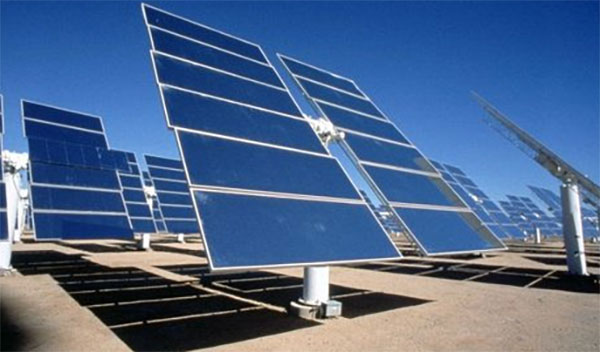
Technological Advancements in Solar Panel Durability
Recent technological advancements have significantly enhanced the durability and efficiency of solar panels, reducing efficiency loss and extending their lifespan.
Innovations to Reduce Efficiency Loss
Several innovations stand out in their contribution to reducing efficiency loss in solar panels:
- Improved Photovoltaic Cell Materials: Advances in cell materials, such as the use of perovskite and bifacial cells, have improved efficiency and resilience against environmental factors.
- Enhanced Anti-Reflective Coatings: Modern solar panels often include anti-reflective coatings that reduce light reflection and increase the amount of light absorbed, thereby enhancing efficiency.
- Better Encapsulation Materials: The use of durable encapsulation materials protects the solar cells from moisture and other environmental damages, prolonging their lifespan.
- Robust Frame and Glass Design: The development of stronger frames and tempered glass enhances the physical durability of solar panels, making them more resistant to wind, hail, and other mechanical stresses.
Longevity of Modern Solar Panels Compared to Older Models
To illustrate the advancements in solar panel technology, here's a comparative table highlighting key differences between modern and older solar panel models:
| Feature |
Modern Solar Panels |
Older Solar Panel Models |
| Efficiency |
Up to 22-24% for top-end models |
Typically around 15-17% |
| Degradation Rate |
Approximately 0.5% per year |
Around 1% per year |
| Material Advances |
Use of perovskite, bifacial cells, improved silicon cells |
Predominantly polycrystalline and some monocrystalline cells |
| Durability |
Enhanced with strong frames and tempered glass |
Less robust frame and glass design |
| Lifespan |
Often 25-30 years with maintained efficiency |
Around 20-25 years with noticeable efficiency drop |
| Cost |
Initially higher but more cost-effective in the long run |
Lower upfront cost, higher long-term expense |
| Environmental Resistance |
Better resistance to extreme temperatures, wind, and hail |
Less equipped to handle harsh environmental conditions |
| Maintenance Requirements |
Reduced maintenance due to better durability |
Higher maintenance needed for efficiency retention |
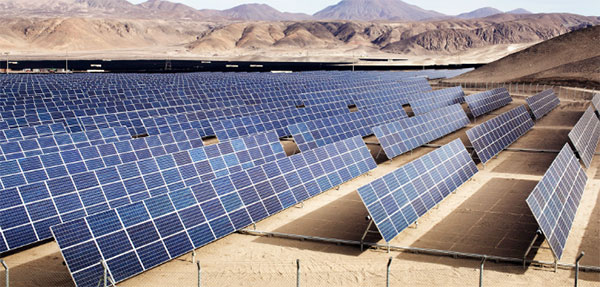
Lifecycle Analysis of Solar Panels
Analyzing the lifecycle of solar panels, from their operational lifespan to disposal and recycling, is crucial for understanding their overall environmental impact and cost-effectiveness.
Expected Lifespan and End-of-Life Efficiency
Solar panels typically have a long operational life, with many models designed to last
25 to 30 years. However, their efficiency gradually decreases over time:
- Initial Efficiency: Modern solar panels start with an efficiency range of 15-22%, depending on the type and quality.
- Degradation Rate: The average annual degradation rate for solar panels is about 0.5-1%. This means a solar panel with an initial efficiency of 20% might drop to around 16-18% efficiency after 25 years.
- End-of-Life Efficiency: By the end of their lifespan, solar panels usually retain about 80-90% of their initial efficiency. This gradual decline affects the power output and, consequently, the overall energy yield.
The
cost of solar panels has decreased significantly over the years, making them an increasingly viable option. The initial investment in a residential solar panel system can range from
$10,000 to $20,000, but the long lifespan and energy savings can offset this cost over time.
Recycling and Disposal of Aged Solar Panels
As solar panels reach the end of their useful life, proper disposal and recycling become essential:
- Recycling Process: Solar panel recycling involves separating and recovering valuable materials like glass, aluminum, silicon, and metals.
- Challenges: The complex composition of solar panels makes recycling a challenging process. However, advances in recycling technologies are improving the efficiency and effectiveness of this process.
- Environmental Impact: Proper recycling reduces the environmental impact of solar panel disposal. It ensures that hazardous materials are not released into the environment and that valuable resources are reused.
- Cost of Recycling: While the recycling process adds to the overall lifecycle cost of solar panels, it's crucial for sustainable energy practices. The cost of recycling can vary but is often offset by the value of recovered materials.





